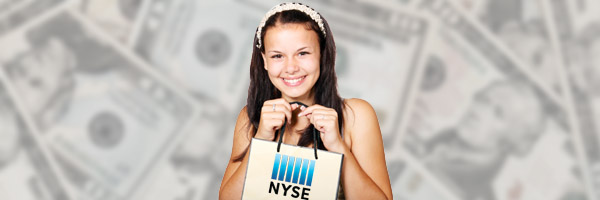When my cash reserve had built back up after December’s dividend payouts and some matching cash transferred, I started January well equipped to make one or two stock buys. The selloffs and turmoil currently roiling the world’s markets makes for a great time to buy stocks at a discount (and hence a higher dividend yield). However, my dividend investing portfolio’s value has taken a hit, worse than August’s volatility that shook the world’s markets.
The first stock I bought, Stone Harbor Emerging Markets Income Fnd (NYSE:EDF), is a closed-end fund with most of its holdings in public and private foreign debt. I bought 75 shares at $12.38. With a dividend of 18 cents per share, this buy has a 17.44% yield (!) or $13.50 per month. Here are the pros and cons about EDF:
Advantages:
Yield. The dividend is unusually high, but it has been steady since 2011. I realize the past is no indicator of the future, and a cut may happen. Such a high yield is usually quite precarious.
Institutional ownership. With an institutional ownership rate of 31%, major investors seem to have some degree of confidence in the stock.
International. Unlike the majority of my stocks, 96% of EDF’s holdings are international. The majority of EDF’s holdings are foreign government and private-sector bonds. Right now, the US economy is in the best shape coming out of the Great Recession and the rest of the world isn’t doing so well. But down the road, that will certainly change.
Disadvantages:
Leverage. With a leverage rate of 31.9%, it’s high enough to give one pause. I usually try to avoid stocks with such a high degree of leverage, but I’m willing to take a risk on EDF given its high yield.
Return of Capital (ROC). Yes, another damn ROC dividend. But unlike the dividends of AWP and CHW, EDF’S ROC makes up a small part of the total dividend and most of the dividend payout is income. The ROC and income parts of EDF’s dividends change a little from month to month, but ROC averages around 15% and income averages 85% of the total dividend payout, so that’s an Income/ROC ratio I can live with.
Age. With an inception date of 12/23/2010, EDF is a fairly new stock and has only only paid a monthly dividend since 2011. Other than the volatility that rocked the markets in August and right now, EDF has not experienced any major economic downturns since its inception during the Great Recession.
In short, EDF is a high risk stock but for such a high yield I believe it’s worth making a modest investment into. The 75 shares I have is enough, giving it a weight of approximately 2.1% of my dividend income. With its high risk level, I doubt I will invest any further with EDF.
My other newest buy is less risky, and is certainly a departure from the usual ETF/CEF stocks that make up the builk of my portfolio. Compass Diversified Holdings (NYSE:CODI) is a conglomerate that owns several diverse profitable companies. With a yield of approximately 9%, I’ve had my eye on CODI for the past few months. Given the recent turmoil in the market and insiders snapping up shares in the past few months, I deemed now a good time to buy. I got 40 shares at $15.38 and a week later 30 shares at $15.27, for an average yield of 9.39% (CODI pays 36 cents per share every quarter).
Here are CODI’s pros and cons:
Advantages:
Strong dividend. CODI is the rare business that maintained its dividend through the worst of the Great Recession. That says a lot about the competence of Compass’s management when times get tough. It has also increased the dividend in the past several years: 32.5 cents in Oct. 2007, 34 cents in Oct. 2008, and 36 cents in March 2011. Nice!
Institutional ownership. Having institutional investors owning 37% of CODI is certainly a positive sign of confidence in Compass, as company management has proven to be committed to investors.
Disadvantages:
Age. Established in 2006, Compass is not as old as I would prefer, so its history is limited, having only experienced one economic downturn since its inception in 2006.
I’m glad I finally pulled the trigger on CODI, and I’m optimistic about its future and intend to buy more shares when I can afford to.

